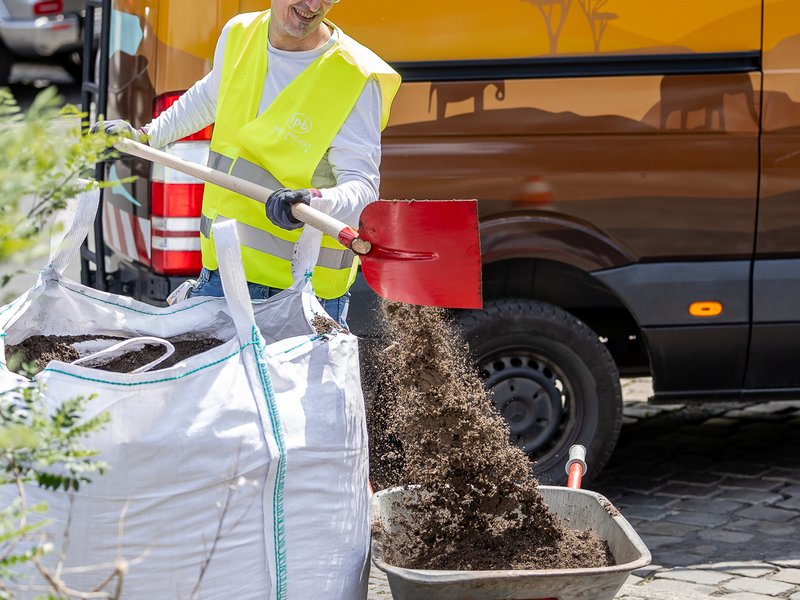
1 |
Photo: INSEL.PROJEKT.BERLIN GmbH | Photographer: Ines Grabner
The Urban Wildlife Path is a new, playful feature for families that guides the route between Zoologischer Garten station and Berlin Zoo. It invites children and adults alike to pause at six seating islands and discover more about the wild animals that live among us – often without us even noticing.
The trail was developed in a prototypical Urban Design Thinking workshop as a site-specific solution: How can we find our way more easily across the confusing layout of Hardenbergplatz? Where can people sit down? And how can we make the square’s role as a key entrance to the world-famous Berlin Zoo more tangible?
The result: seating islands with benches and planters, installed in June 2025, now improve the square’s usability and quality of stay. Each one features a panel from the Urban Wildlife Path – offering children a short animal fact and providing a QR code that links to further background information for curious companions.
In this way, the Urban Wildlife Path combines simple orientation with accessible environmental education – and encourages people to take a more conscious look at the everyday wildlife around Hardenbergplatz. Because even if more exotic animals live just next door in the zoo, those who look closely can discover many fascinating and worthy species right here in the city.
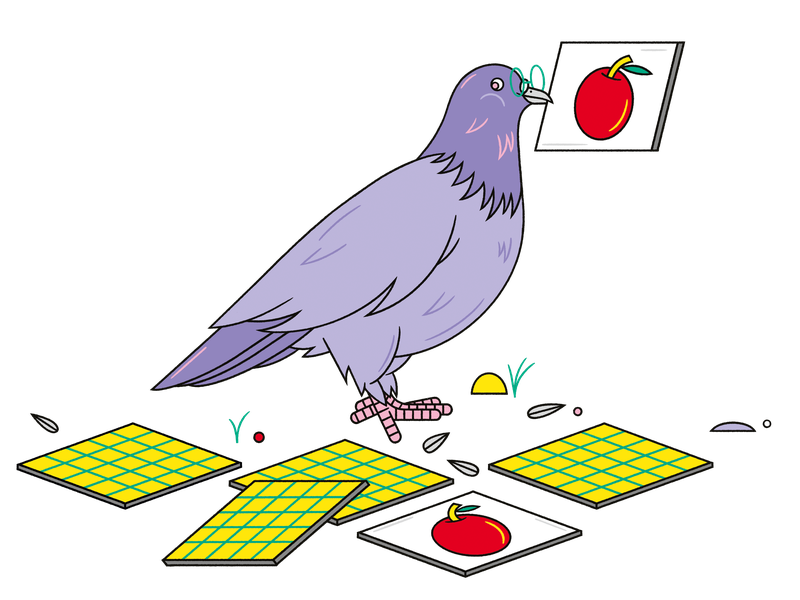
L.Hoff, aufsiemitgebruell.de
Did you know pigeons have an astonishing memory? They can recognise up to a hundred images – and even identify individual people!
Researchers have found that pigeons can tell faces apart – even when someone changes their clothes or hairstyle. In cities like Berlin, we see them all the time – and yet we rarely give them much attention.
Urban pigeons are descended from the wild rock dove (lat.: Columba livia). Instead of cliffs, they now nest on buildings, under bridges or in train stations. They know the city like the back of their wing, have fixed feeding routes, and return to the same places over and over – even years later. It’s no wonder some pigeons become particularly trusting toward certain people: they remember who is kind or brings food.
Even if they’re sometimes seen as a nuisance, pigeons play an important role in the urban ecosystem. That’s why organisations like NABU Berlin advocate for a fair approach – for instance through supervised pigeon lofts that support humane population control.
You can find more information at NABU Berlin (german): https://berlin.nabu.de/stadt-und-natur/projekte-nabu-berlin/artenschutz-am-gebaeude/vogelarten-am-gebaeude/16064.html
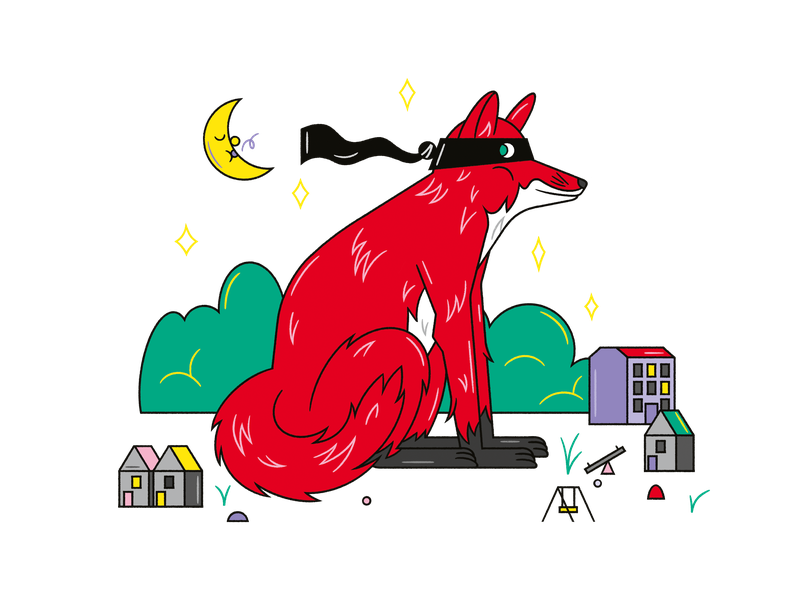
L.Hoff, aufsiemitgebruell.de
Did you know city foxes prowl through gardens at night and bark quietly? These calls are how they communicate – much like dogs, but in a more discreet way. This helps them stay in touch with one another without disturbing sleeping humans.
Red foxes (lat.: Vulpes vulpes) are no longer a rarity in Berlin. They live not only in parks and cemeteries but also in the middle of residential neighbourhoods. There, they find shelter under sheds, in hedges, or behind buildings. Their diet is varied: mice, insects, fruit – and sometimes leftovers tossed aside by people.
What’s particularly interesting is how differently city foxes behave compared to their rural cousins. They’re more cautious, learn quickly, and adapt remarkably well to everyday urban life. Still, they remain wild animals – they shouldn’t be fed or touched, even if they seem surprisingly tame.
If you spot a fox, there’s no need to worry – they’ve long since become part of the city. For more on foxes in Berlin, visit NABU Berlin (german): https://berlin.nabu.de/tiere-und-pflanzen/saeugetiere/fuchs/index.html
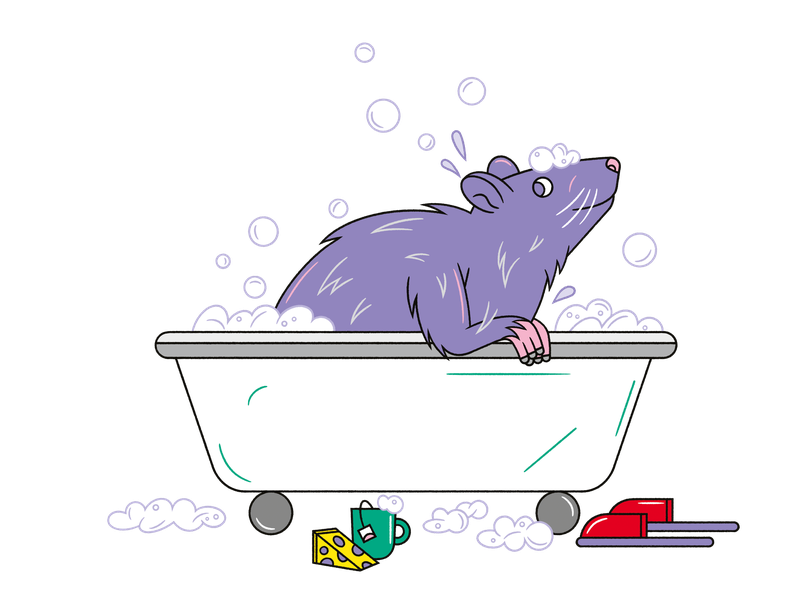
L.Hoff, aufsiemitgebruell.de
Did you know rats are incredibly clean animals? They groom themselves daily – often more thoroughly than cats. They clean their fur, their paws, and even their tails.
The idea that rats are dirty comes from the places they often inhabit: sewers, basement shafts, or rubbish rooms. But these environments don’t make them unclean – quite the opposite. Rats even help groom one another and care for each other in their groups.
Rats originally come from northeast Asia, including Siberia and parts of Mongolia. In Berlin, the most common species is the brown rat (lat.: Rattus norvegicus), also known as the Norway rat. They are adaptable, intelligent, and learn quickly. They remember known paths, recognise food sources, and can even solve simple tasks. Researchers have observed social behaviours like empathy and playfulness in rats – such as chasing or wrestling.
Rats are among humanity’s oldest companions. In a big city like Berlin, they find ideal conditions: leftovers, open bins, and dense built-up areas with many hiding places. That’s why they’re widespread – although we rarely see them, since rats are crepuscular and nocturnal, and tend to avoid contact with people.
If you want to help prevent rat overpopulation, there are a few simple things to keep in mind: always close bins, don’t leave food waste outside, and avoid placing pet food outdoors. That way, conflict can be avoided – and without the use of poison.
Further information is available from the German Environment Agency (UBA, german): https://www.umweltbundesamt.de/wanderratte#vorbeugende-massnahmen

L.Hoff, aufsiemitgebruell.de
Did you know crows can use tools? They make tiny hooks from twigs to pull food out of narrow crevices. That makes them one of the few animal species in the world that actively create tools – similar to apes and primates.
This behaviour is particularly well known from the New Caledonian crow, but even here in Berlin, crows demonstrate astonishing abilities.
The city is home to hooded crows (lat.: Corvus cornix) and rook crows (lat.: Corvus frugilegus). Both belong to the corvid family, which is known for its exceptional intelligence. They can recognise themselves in mirrors, remember individual faces, and hide food to retrieve later – and they find it again! That’s why scientists say their intelligence is comparable to that of primates.
Crows are well adapted to urban life. They build their nests high up in trees or on buildings, and they eat insects, nuts, fruit – or whatever they can find on pavements and squares. As they do, they observe their surroundings very closely and continue to learn.
If you take a closer look, there’s a lot to discover about these fascinating birds. You can find more information at NABU Berlin (german): https://berlin.nabu.de/tiere-und-pflanzen/voegel/arten/kraehenvoegel/28115.html
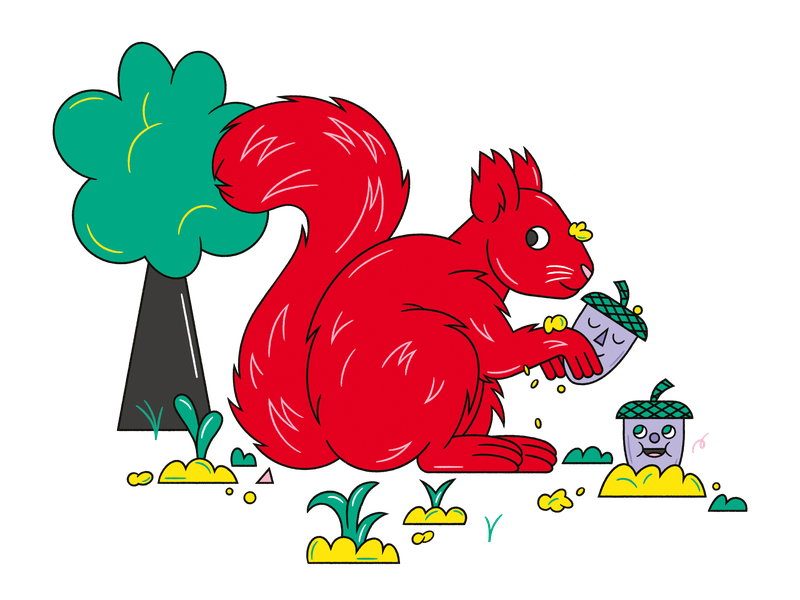
L.Hoff, aufsiemitgebruell.de
Did you know squirrels often forget where they’ve hidden their nuts? Those forgotten treasures can later grow into new trees! What looks like forgetfulness is actually a big help for forests – and for the city too. In this way, these small climbers help trees spread.
In Berlin, you’re most likely to encounter red squirrels (lat.: Sciurus vulgaris) in parks, gardens and cemeteries. They live mostly alone, move nimbly through treetops, and build their round nests – called Kobel – high up in branches or forks. Their diet includes nuts, seeds, buds, fruit, mushrooms and sometimes insects.
In autumn, they stockpile food for the winter. They hide hundreds of nuts, often buried one by one or stashed between roots. While they use their excellent sense of smell to find many of their hiding spots again, some get left behind – sprouting new life come spring.
As charming as they are – squirrels do just fine on their own. If you don’t feed them but leave them in peace, that’s the best way to help.
More about Berlin’s squirrels and how to treat them respectfully (german): https://www.berlin.de/ba-lichtenberg/auf-einen-blick/freizeit/gruen/wildtiere/artikel.1305011.php
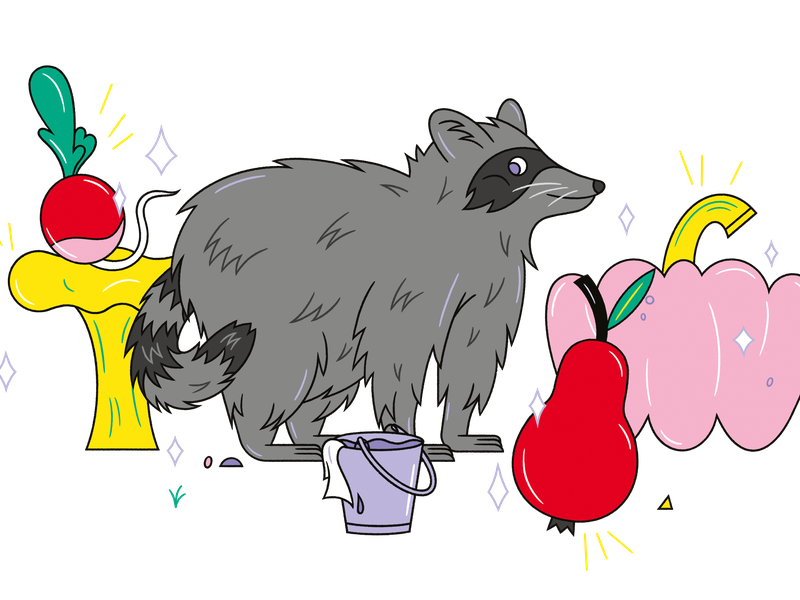
L.Hoff, aufsiemitgebruell.de
Did you know raccoons explore their food with their paws – preferably in water? It looks like they’re washing it, but in fact, they’re using their finely tuned sense of touch to examine it. Their paws are so sensitive, their sense of touch is almost as developed as that of primates.
Raccoons (lat.: Procyon lotor) originally come from North America and were introduced to Europe in the 20th century. They now feel at home in Berlin as well – especially in gardens, attics or quiet backyards. They’re nocturnal, extremely agile, and can use their front paws to open doors, latches and bin lids.
They’re easy to spot thanks to their grey-brown fur and the dark “raccoon mask” around their eyes. Raccoons don’t build permanent nests: During the day, they rest in tree hollows, abandoned sheds or attic spaces. They have a highly varied diet: fruit, insects, small animals – and leftovers. They’ll try just about anything.
Even if they’re sometimes seen as overly nosy: raccoons are peaceful, adaptable and fascinating to observe – best done from a respectful distance.
Detailed information about raccoons and their role in Berlin’s ecosystem is available from NABU Berlin (german): https://berlin.nabu.de/tiere-und-pflanzen/saeugetiere/waschbaer/35779.html
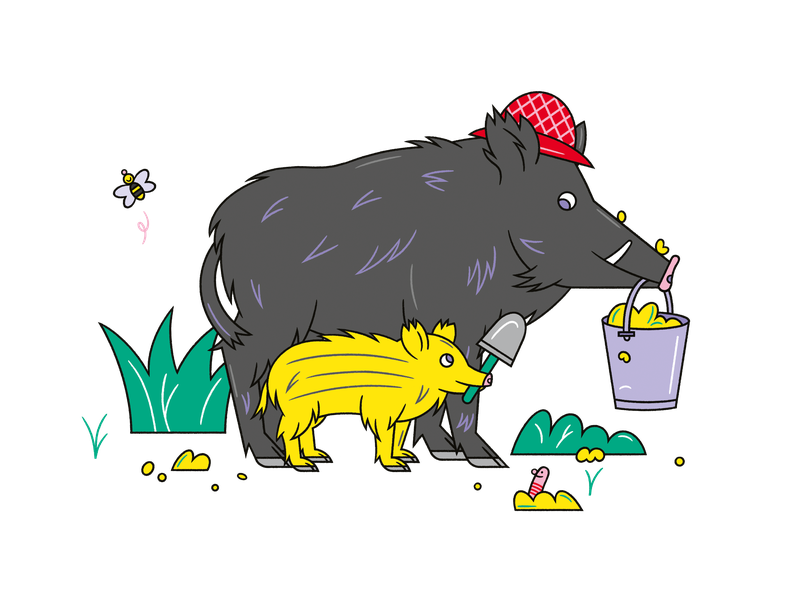
L.Hoff, aufsiemitgebruell.de
Did you know wild boars dig up the ground in cities while looking for food? Their powerful snouts loosen the soil – almost like little gardeners.
In Berlin, this happens on the edges of large parks, in urban woodlands, and sometimes even in suburban gardens.
Wild boars (lat.: Sus scrofa) are among the largest wild animals in the city. They live in so-called “sounders” – family groups made up of mothers and their young. These animals are highly social, with a strong sense of smell, and they communicate using grunts, squeals and body language. They’re especially active at dusk and during the night.
What are they looking for? Acorns, roots, worms, mushrooms – and occasionally fallen fruit. Their sensitive snouts help them locate food buried deep in the soil. In dry spells or when natural food is scarce, they venture closer to residential areas – although they tend to remain shy.
Wild boars are peaceful, but they can be startled if approached – especially if piglets are nearby. Those living near wooded areas should keep food stored securely and never feed wild animals.
More information about Berlin’s urban wild boars can be found at NABU (german): https://www.nabu.de/tiere-und-pflanzen/saeugetiere/sonstige-saeugetiere/28522.html